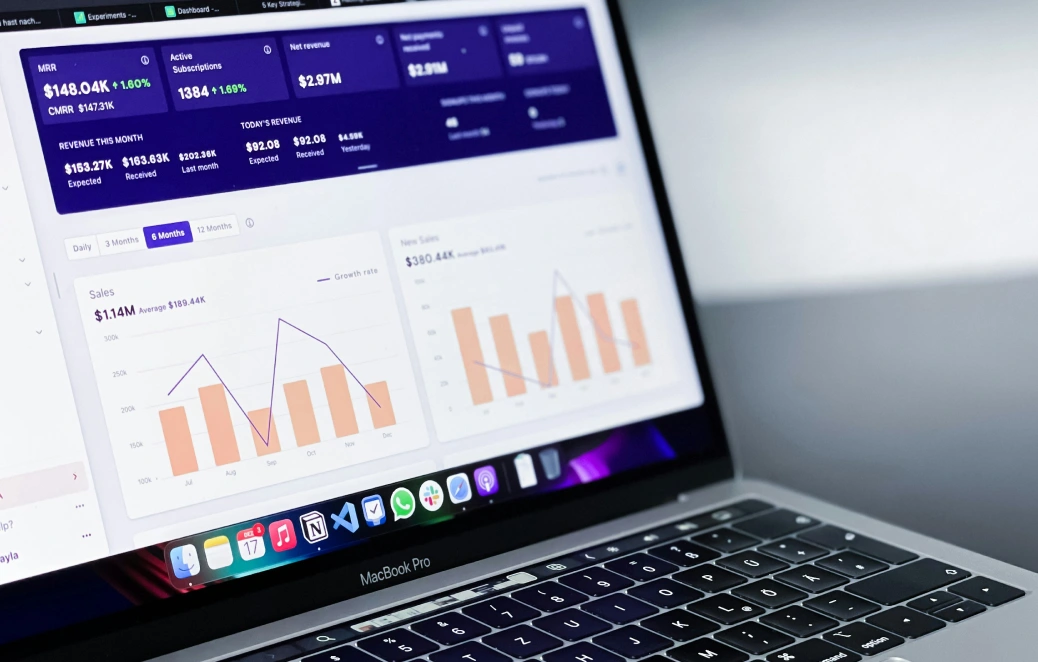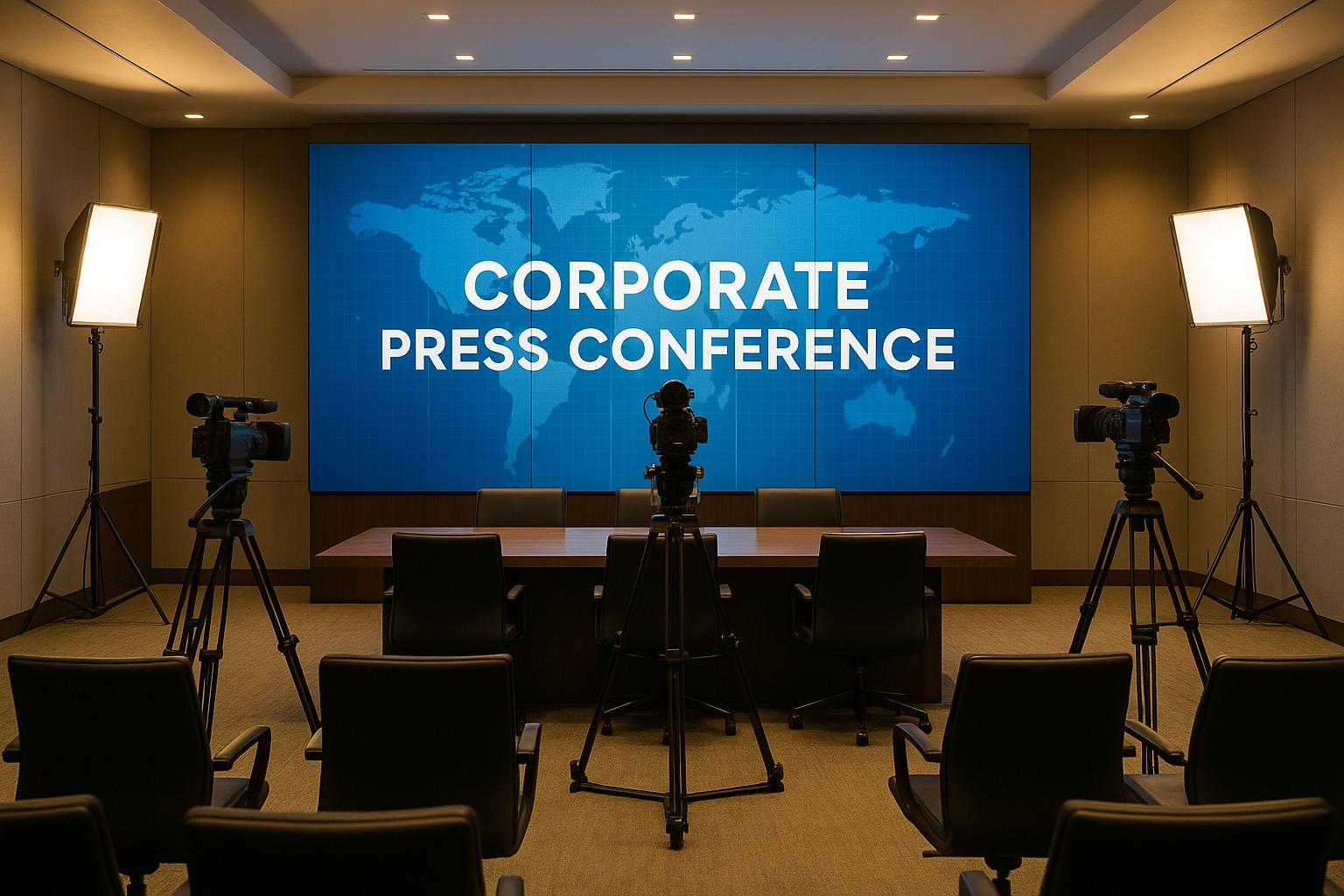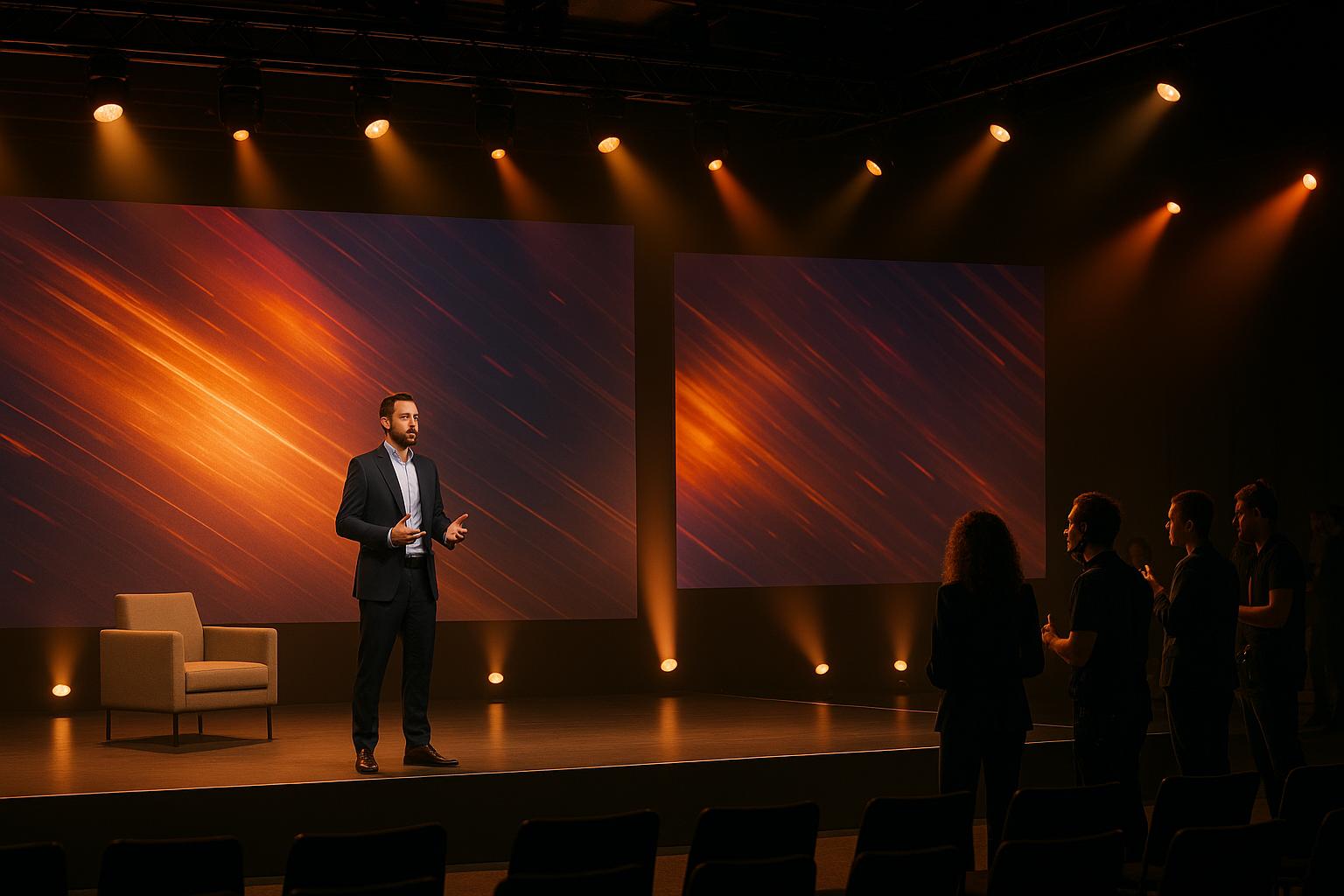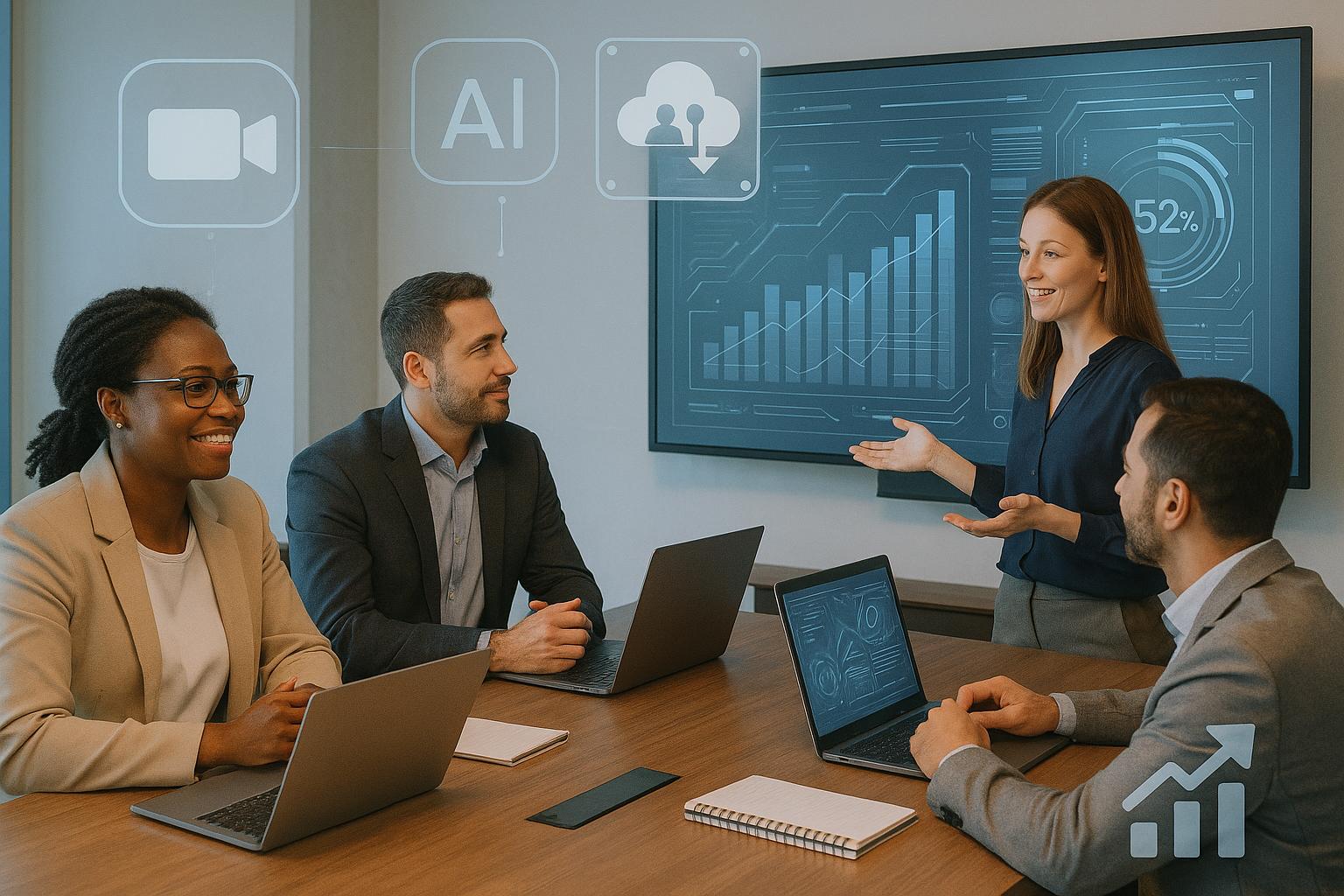How to Support Executive Speakers at Events

Chief Executive Officer
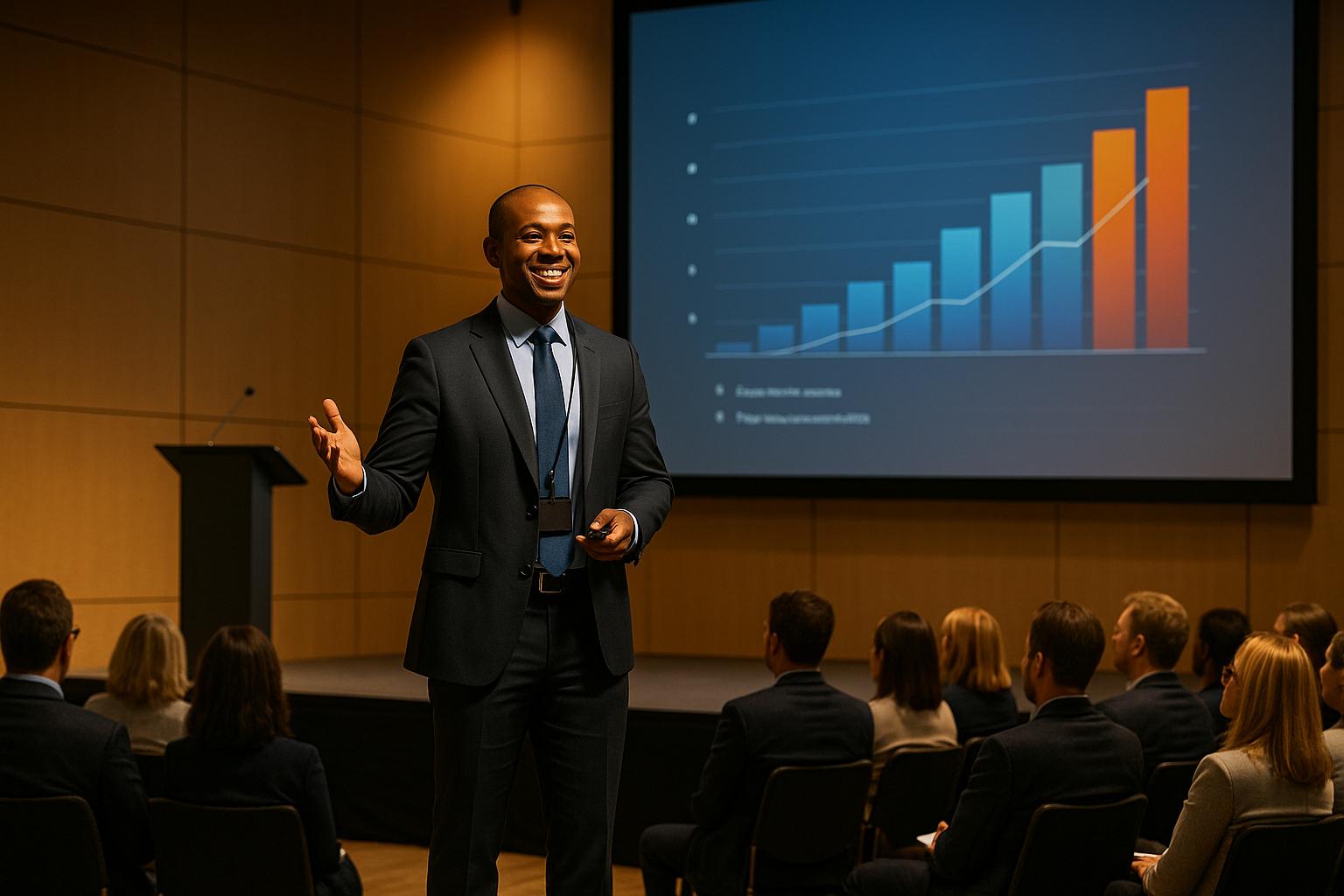
When executives step onto a stage, their focus should be on delivering a powerful message - not worrying about technical glitches or logistical hurdles. Supporting them effectively requires detailed preparation, flawless technical execution, and strong on-site coordination. Here’s how you can ensure your executive speakers shine at every event:
- Pre-Event Planning: Define event goals, align speaker roles, and prepare logistics like travel, venue layout, and presentation materials well in advance.
- Technical Setup: Test audiovisual equipment, stage design, and internet connectivity at least 48 hours prior. Schedule rehearsals to refine transitions and resolve potential issues.
- On-Site Support: Assign a dedicated liaison to handle speaker needs and provide real-time technical assistance. Always have backup solutions ready for equipment or connectivity failures.
- Post-Event Follow-Up: Collect feedback, share presentation assets, and analyze event performance to identify areas for improvement.
How to Prepare and Deliver a Keynote Speech
Pre-Event Planning and Coordination
Getting your speakers ready for an event doesn't happen overnight. It requires weeks of preparation to align every detail with your event's goals and ensure a smooth experience.
Define Event Goals and Speaker Roles
Start by making sure the event's purpose is crystal clear and that your speakers' roles are aligned with it. What are you aiming to achieve? Whether it's presenting quarterly results to reassure investors, motivating employees with a new strategy, or unveiling a game-changing product, defining your objectives is key. Once you have those objectives, match each speaker's role to them. This not only clarifies what’s expected of the speakers but also ensures their contributions fit seamlessly within the broader event plan and budget.
During this stage, address practical details like presentation formats, audience engagement strategies, and time slots. Sorting these out early avoids last-minute chaos and keeps the event on track.
Coordinate Speaker Logistics
Managing executive schedules can feel like solving a puzzle, but careful planning makes it manageable. Create a detailed timeline that counts down to the event day. Factor in travel plans, possible delays, rehearsal times, and even some buffer periods for unexpected hiccups. If speakers are flying in from different time zones, give them enough time to adjust and feel comfortable.
Don't overlook venue logistics either. Make sure speakers know the layout, how to get to the stage, and where the green rooms or prep areas are located. Even small touches, like having water nearby or ensuring proper lighting for reading notes, can make a big difference in their comfort and confidence. A well-thought-out logistics plan also streamlines technical setups and rehearsals.
Collect and Prepare Speaker Materials
Gathering and organizing speaker materials is another critical step. Request all necessary files, such as presentations and bios, well in advance. Set firm deadlines for submissions and always keep backup copies on hand. These preparations pave the way for smooth rehearsals and a stress-free event day.
Technical Setup and Rehearsal
Once you've finalized the logistics and gathered all the necessary materials, it's time to focus on the technical foundation that will make or break your executive presentation. This phase demands precision, thoroughness, and plenty of testing to ensure everything runs smoothly when it's showtime. Below, we’ll walk through the key technical preparations needed to set the stage for success.
Test and Set Up Audiovisual Equipment
Audiovisual equipment plays a pivotal role in any presentation. To avoid technical hiccups, test every component at least 48 hours before the event. This includes microphones, projectors, screens, lighting, and sound systems. Don’t just confirm that they power on - test them under real presentation conditions.
Check all microphones - whether they’re wireless, lapel, or handheld - for clarity, battery life, and potential interference. Lighting is equally critical. Overhead lights can cast awkward shadows, while dim lighting may obscure facial expressions for remote viewers. Aim for a setup that eliminates shadows and provides clear visibility for both in-person and virtual attendees.
The projector and screen are vital for ensuring your audience can follow along. Test resolution, brightness, and color accuracy. Make sure slides are legible from the furthest seats, and confirm that videos play without delays or visual glitches.
"Our full-service event production covers scenic, lighting, audio & visual coordination so you can focus on leading and connecting." - Corporate Optics
Bringing in a professional technical production team can simplify this process. These experts understand equipment compatibility, venue acoustics, and potential pitfalls that might escape your notice. With a solid technical setup, speakers can focus on delivering their message without distraction.
Design Stage Layout and Check Connectivity
The stage layout should enhance the speaker’s presence while maintaining functionality. Consider the speaker’s style - do they prefer staying behind a podium, or are they more dynamic, moving around as they present? The stage design should reflect their preferences, balancing aesthetics with practicality.
Connectivity is another critical element. Test Wi-Fi strength and stability from multiple positions on the stage, ensuring it can support features like live polling, real-time Q&A, or social media integration. Make sure cameras and audience members have clear sightlines, and confirm there’s an adequate power supply, complete with backups.
By integrating technical needs with the event’s overall goals and the speaker’s requirements, you can create a seamless setup that amplifies the presentation’s impact.
Schedule Speaker Rehearsals
To iron out any wrinkles, schedule full technical rehearsals 48 hours prior to the event. These sessions should replicate the actual presentation environment as closely as possible, using the same equipment, lighting, and stage setup.
During rehearsals, test all systems with the actual presentation materials. Run through the entire program, including slide transitions, segment timings, and speaker handoffs. If multimedia elements are involved, ensure they integrate smoothly.
Contingency planning is a must. For example, what’s the backup plan if the clicker stops working? How quickly can you switch to alternate slides if the main system goes down? Practicing these scenarios ensures your team can handle issues without disrupting the flow of the event.
"Our team transforms plans into reality with flawless execution, from managing logistics, coordinating with vendors, technical rehearsals and contingency planning - no surprises, just results." - Corporate Optics
Rehearsals are also the time to gauge the speaker’s comfort level with the technology. Some executives prefer controlling their own slides, while others might want a technician to handle it. These preferences should be addressed during rehearsal, not discovered during the live presentation.
Finally, test the audio setup in the actual venue. Large spaces like auditoriums have different acoustic properties compared to smaller rooms. Adjust microphone levels and sound settings to suit the speaker’s natural volume and delivery style.
The ultimate goal of technical rehearsals is to eliminate surprises and instill confidence. When your executive steps onto the stage, they should feel completely at ease with every technical aspect of their presentation.
sbb-itb-ae35a94
On-Site Support for Executive Speakers
When the big day arrives, all the planning and preparation come together in real time. The difference between a polished presentation and a chaotic experience often hinges on the quality of on-site support. Executive speakers need to focus solely on their message, leaving your team to handle everything behind the scenes. By extending earlier planning efforts into seamless on-site execution, you ensure the speaker stays focused and stress-free.
Assign a Dedicated Speaker Liaison
Every executive speaker should have a single point of contact throughout the event day. This liaison acts as the speaker's go-to person for handling questions, addressing concerns, and managing any last-minute adjustments. Without this role, especially at large events, speakers can easily become overwhelmed by distractions.
The liaison should arrive at the venue at least two hours before the presentation begins. Their responsibilities include greeting the speaker, confirming the final schedule, and addressing immediate needs. They should also maintain direct communication with all relevant team members, from AV technicians to on-site staff.
Choose someone who communicates effectively and can make quick decisions. For example, if the speaker requests a room temperature adjustment or needs an update to their presentation slides, the liaison should handle it promptly, allowing the speaker to stay focused. By managing the timeline and offering timely reminders, the liaison ensures everything runs smoothly.
Provide On-Site Technical Assistance
In addition to having a liaison, flawless technical support is essential. Technical teams must work discreetly yet remain ready to step in at a moment’s notice. Position technicians strategically to monitor systems without drawing attention.
Audio is a top priority. Assign a team member to manage microphone levels, eliminate feedback, and adjust sound to complement the speaker’s delivery. For slide management, clarify in advance whether the speaker will control their presentation or if a technician will handle transitions. If the latter, rehearse cues and keep backup copies of the slides in multiple formats.
Live streaming and recording add another layer of complexity. Ensure camera angles are correct, lighting is consistent, and connectivity issues are monitored closely. Always have backup streaming solutions ready to deploy if the primary system encounters problems.
"Every time we work with Corporate Optics, we know we're in good hands. Their attention to detail and ability to adapt to challenges is unmatched." - Ed D., Senior Managing Director, Chief Operating Officer
Professional event teams excel by staying alert and resolving issues quickly, ensuring the speaker’s message comes through loud and clear.
Plan for Backup Solutions
Even with meticulous planning, live events can present unexpected challenges. Having robust backup measures in place can prevent minor hiccups from becoming major disruptions. These plans should cover equipment failures, connectivity issues, and content-related problems.
For equipment failures, have duplicates of essential tools and pre-load backup files. If a primary tool, like a clicker, stops working, a manual alternative or immediate replacement should be available.
Connectivity problems can derail presentations that rely on live demonstrations or real-time data. Prepare offline versions of any web-based content and have mobile hotspots ready as backup internet sources. Test these backups beforehand to ensure they work as expected.
When it comes to content emergencies - like corrupted files or last-minute updates - store multiple copies of presentation materials in various formats (e.g., PowerPoint, PDF, or image files) across different devices and cloud platforms for quick access.
"Such a tremendous team and group to work with. They always remain calm (with a smile), have our back, and are prepared for anything." - Pete L., SVP, Marketing
Establish clear protocols for switching to backups, and rehearse these transitions so they can be executed smoothly under pressure. With effective backup solutions in place, technical issues can be resolved so quickly that the audience barely notices, allowing the speaker to deliver their message with confidence.
Use discreet communication tools - like text messages or wireless headsets - to coordinate responses without drawing attention to any behind-the-scenes challenges.
Post-Event Follow-Up and Analytics
The work isn’t over when the last speaker steps off the stage. What happens after the event can be just as important as the event itself. Following up not only strengthens relationships with your executive speakers but also provides valuable insights to refine future events. These steps build on earlier efforts and set the stage for continuous improvement.
Gather Feedback and Insights
Timing is everything when it comes to feedback. Aim to collect it within 24–48 hours while the event is still fresh in everyone’s mind. A short, focused survey sent to your executive speakers can cover key areas like the quality of technical support, effectiveness of liaisons, venue comfort, and overall experience. Questions such as, "Did the rehearsal adequately prepare you for the live presentation?" or "What could have improved your speaking experience?" can yield actionable insights.
But don’t stop at surveys. Follow-up calls can uncover nuances that written feedback might miss. These conversations often provide a deeper understanding of what worked and what didn’t. Don’t forget to tap into your internal team’s observations - liaisons, AV technicians, and support staff often have valuable behind-the-scenes perspectives. Document everything systematically to spot patterns and identify areas for improvement.
Share Presentation Assets
After the event, executive speakers and attendees expect professional handling of presentation materials. This includes securely distributing recordings, slides, and summaries. Use enterprise-grade platforms to ensure materials are shared safely and appropriately. Always confirm with each speaker what can be shared, who can access it, and in what format. For instance, one speaker might allow their slides to be distributed but prefer to keep video recordings private.
Make it a priority to distribute these materials within a week. Tailor the packages based on your audience - detailed versions for board members and concise highlights for general attendees. Timely sharing doesn’t just meet expectations; it also supports accurate post-event analysis.
Use Post-Event Analytics
Analytics play a key role in understanding your event’s overall success and the effectiveness of your speaker support. Services like Corporate Optics include post-event analytics as part of their technical production offerings, helping organizations gauge event impact. By reviewing both qualitative feedback and hard data, you can identify trends, reinforce what worked, and pinpoint areas for improvement.
Sharing a high-level summary of these insights with your executive speakers shows your commitment to their success. It also gives them a better understanding of how their participation contributed to the event’s goals. Over time, this cycle of feedback and refinement strengthens your approach to supporting executive speakers and enhances the overall quality of your events.
Conclusion: Creating a Smooth Experience for Executive Speakers
Supporting executive speakers requires thoughtful preparation, technical precision, and a commitment to continuous improvement. From the initial planning stages to post-event analysis, every step plays a role in setting the stage for impactful presentations that amplify key messages.
The most effective approach starts with a clear understanding of your event’s primary goals. This discovery phase establishes a shared vision, ensuring that every technical and logistical decision aligns with your objectives. By eliminating uncertainties, this groundwork builds speaker confidence, allowing executives to focus entirely on delivering their message.
Thorough preparation also lays the foundation for flawless technical execution. Elements like professional audiovisual coordination, dynamic lighting, and carefully crafted scenic design come together to create an environment that enhances both the speaker's delivery and the audience's experience. And when challenges arise, the ability to adapt quickly ensures that every moment remains impactful, no matter the circumstances.
Experienced event production teams play a crucial role in simplifying complex processes and delivering seamless results. For example, Corporate Optics employs a structured project lifecycle that ensures every detail - from initial planning to final delivery - is meticulously managed. Their contingency planning minimizes surprises, while their expertise elevates both the event execution and the speaker’s performance.
"Corporate Optics took our event to the next level. Their creativity, professionalism, and attention to detail are top-notch. They brought vision to life flawlessly. Above and beyond care and execution. Highly recommend." – Nikki D., Vice President of Sales
Investing in comprehensive support for executive speakers doesn’t just enhance individual events - it builds long-term value. A well-executed event strengthens organizational reputation and fosters deeper connections with stakeholders. Post-event follow-ups, including speaker feedback, team observations, and data analysis, provide insights that refine future events, creating a cycle of continuous improvement.
Reliable partnerships are essential in this process. Consistent excellence builds trust, enabling organizations to focus on their core objectives while leaving the technical execution to proven experts.
Ultimately, creating smooth experiences for executive speakers is about more than just avoiding problems - it’s about enabling excellence. When preparation, technical skill, and dedicated support align, executive speakers can deliver presentations that resonate deeply with their audiences and advance organizational goals.
FAQs
How can I ensure executive speakers are aligned with event objectives during the planning stage?
To ensure executive speakers align with the event's purpose right from the planning stage, start by clearly outlining the event's main goals and expected outcomes. Share these goals with the speakers and work closely with them to shape their messages so they resonate with the audience and highlight the event's central themes.
Encourage speakers to craft Moments of Impact - those unforgettable moments that might include powerful insights, motivating calls to action, or engaging stories. These moments create a meaningful connection between the audience and the event’s purpose, leaving a lasting impression. Offering clear direction and support during this phase lays the groundwork for a standout presentation and a successful event overall.
What steps can event organizers take to ensure executive speakers are fully prepared during technical rehearsals?
To help executive speakers feel comfortable and ready, technical rehearsals should closely mimic the actual event. Allocate plenty of time for speakers to practice using all the necessary equipment, such as microphones, teleprompters, and presentation software. Simulate the event environment by setting up the stage, fine-tuning the lighting, and testing sound levels to mirror the real conditions.
This hands-on preparation helps speakers get acquainted with the setup and tweak their delivery or content as needed. Collaborating with professionals like Corporate Optics, who specialize in technical event production and AV solutions, can make the rehearsal process smooth and polished.
What’s the best way to collect and use feedback after an event to make future events better?
Collecting feedback immediately after an event is key to making future events even better. When attendees' experiences are still fresh, use tools like surveys, polls, or feedback forms to understand what worked well and what could use improvement.
Once you've gathered the feedback, take time to analyze it. Look for recurring themes and focus on the areas that need attention. This process helps you refine event planning, improve speaker coordination, and create a smoother, more engaging experience for attendees. If you want to simplify the process, you might explore expert services that can help you efficiently analyze feedback and elevate your next event.
Related Blog Posts
